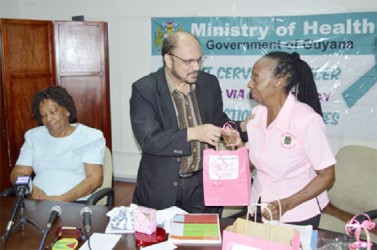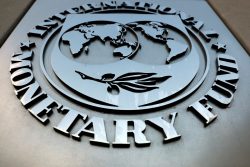Cancer is the third leading cause of mortality in Guyana, according to a report from the Ministry of Health.
A release from the Government Information Agency (GINA) said that Minister of Health Dr Bheri Ramsaran revealed this fact at a press conference on Monday to announce that Guyana would join with the rest of the world to observe World Cancer Day under the theme “Debunk the myth.”
Each year, World Cancer Day focuses on different issues surrounding the disease, and this year, the focus will be on trying to dismiss the misconceptions about cancer; in particular the myth that cancer is a disease that only affects rich countries.

According to the release, although genetic influences increase the risk for developing certain cancers, lifestyles, diets and socio-economic status also play a significant role in the determination of who will be afflicted.
The Health ministry’s report stated that the leading cause of mortality was cerebrovascular diseases while ischemic heart diseases were second and cancer was third. It noted that prostate, breast, lung and cervical cancers were the main categories affecting the Guyanese population.
During the period 2004-2011, over 3,400 persons in Guyana died from various forms of cancer, with the largest number of deaths – 621, occurring in 2011.
According to the release, Guyana had the third highest rate of cervical cancer in the Western hemisphere. It said that Afro-Guyanese account for over 65% of prostate cancer diagnosed, whereas Indo-Guyanese women had the highest number of cases of breast cancer diagnosed.
The minister also reported on the health ministry’s efforts to raise awareness about the disease through implementation of programmes and strategies to aggressively tackle the issue.
Since 2007, the ministry has been focusing on cervical cancer, trying to reduce its incidence through several programmes to educate women across the country.
He said that the ministry continues its national response to ensure preventative methods are made available to the population, such as immunisation against HPV which can cause cervical cancer; visual inspection using acetic acid (VIA) and pap screening for cervical cancer. It has expanded its screening programme for young women, and so far, over 15,000 have been tested for cervical cancer.
The recommendation is that screening should be done every two years for women who either are or were sexually active, since they have a higher risk of cervical cancer.
The ministry, also late last year launched its Health Vision 2020 Strategy for which emphasis was placed on non-communicable diseases (NCDs), particularly cervical cancer, its causes and possible prevention.
It will be intensifying its awareness programme in 2014 across the country as to ensure that persons are aware of cancer. Access to care will also be heightened.
The health ministry also said that cancer control required targeted efforts from creating public awareness, to developing a national strategy, improving screening and diagnosis and developing and sustaining a much more positive environment for persons who are affected by cancer.
At the press conference, members of the Periwinkle Club spoke about how their group has also played a part in the fight against cancer. The club has been in existence for the past seven years, and is involved in educating the public on cancer. The group is made up of cancer survivors and supporters of the fight against cancer. They conduct outreach visits to different locations to sensitise and screen for cancer.
Their main focus is breast cancer, which also occurs in men. As a consequence, the group also raises awareness of cancer in men, since they say that many men were shy to be screened or even learn about cancer.








